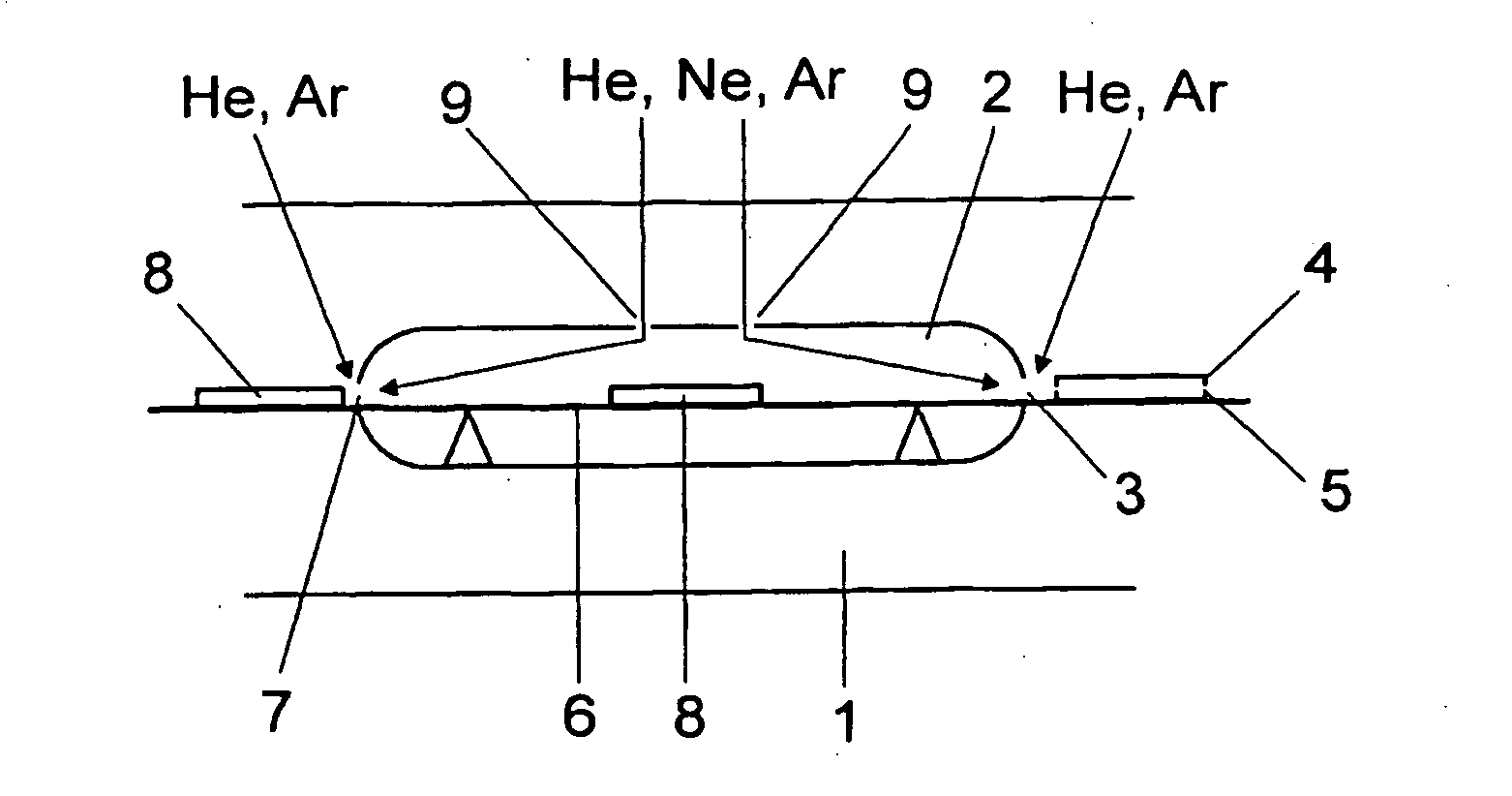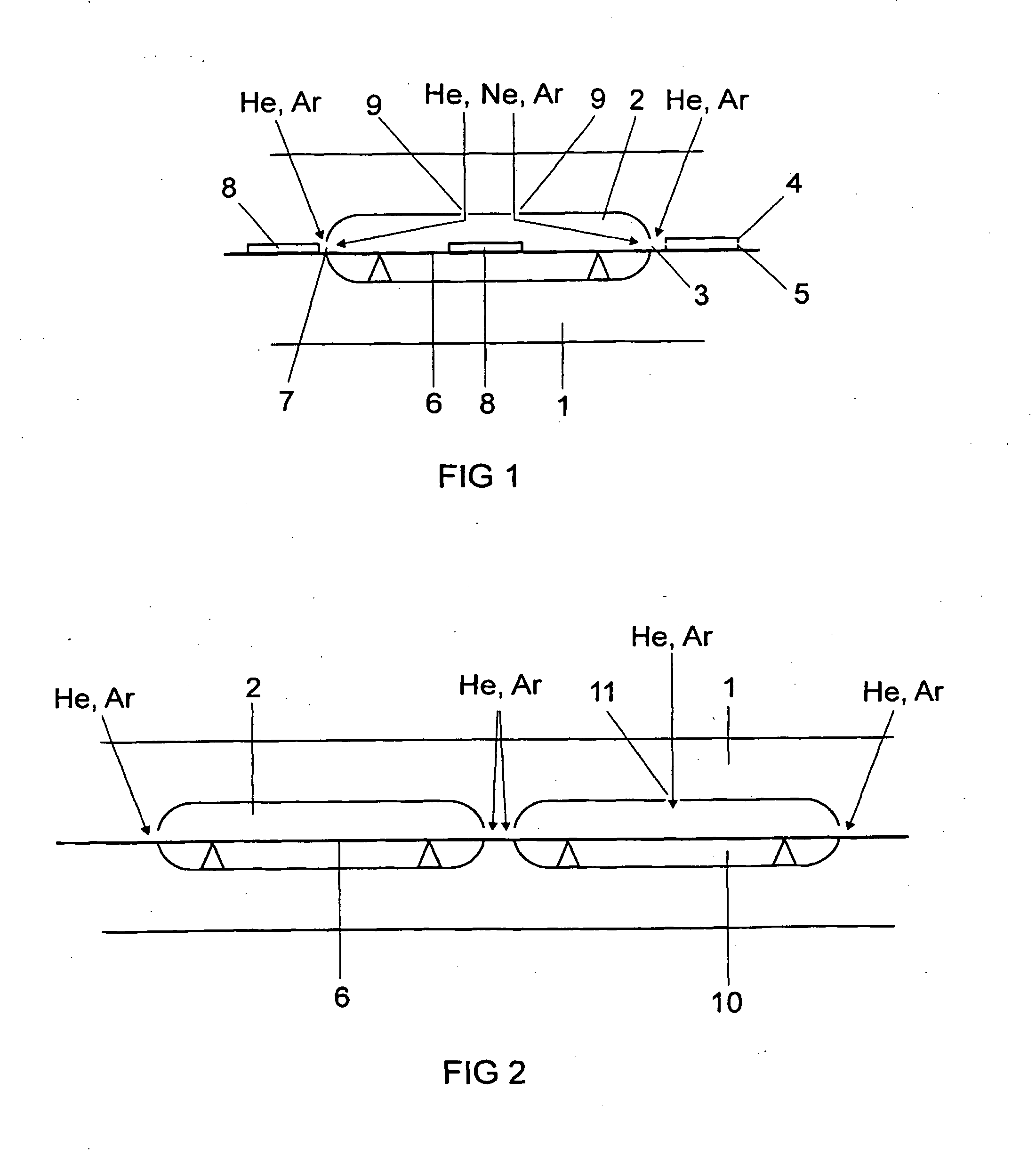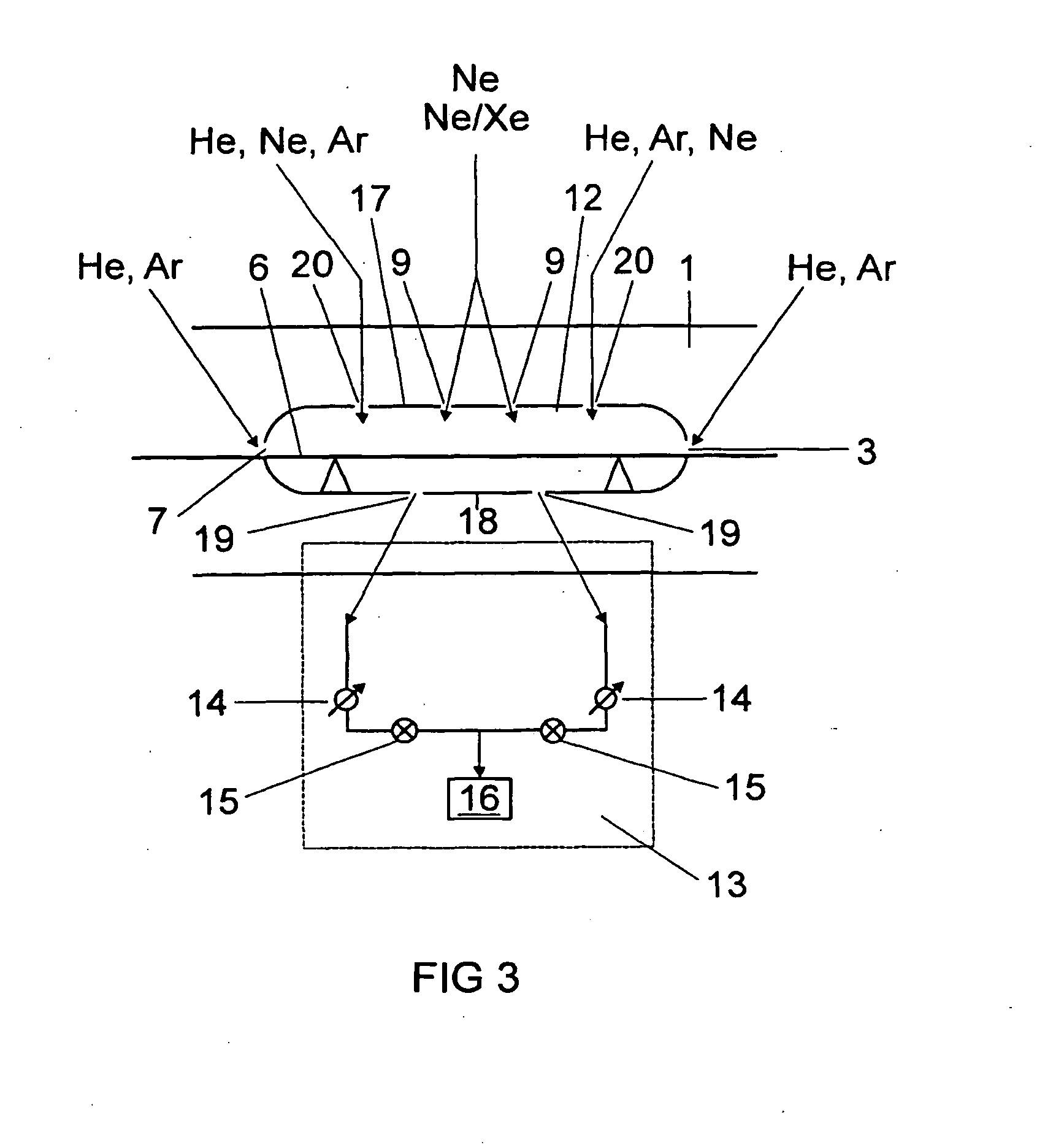Furnace and method for producing a discharge lamp
a technology for discharge lamps and furnaces, applied in the direction of electrode system manufacturing, tube/lamp vessel filling, tube/lamp vessel closing, etc., can solve problems such as economic damage, and achieve the effect of strengthening the barrier effect and improving the purity of the volume between the two suction openings
- Summary
- Abstract
- Description
- Claims
- Application Information
AI Technical Summary
Benefits of technology
Problems solved by technology
Method used
Image
Examples
Embodiment Construction
[0036]FIG. 1 shows a continuous furnace 1 for producing dielectric barrier flat radiators. The continuous furnace 1 comprises a tubular hollow body 2 which is approximately 160 times as long as it is high (expressed in terms of the internal dimensions), i.e. it is not represented true to scale. For example, the dimensions of 8 m length, 60 cm width and 5 cm height may be envisaged. It has an opening 3 for introducing discharge vessel parts 4 and 5.
[0037]During operation, the discharge vessel parts 4 and 5 are introduced into the hollow body 2 and moved through it using a conveyor belt 6 known per se. Closed discharge vessels 8 then leave the hollow body 2 through the opening 7 of the hollow body 2. It is thus a “first” hollow body. The total area of the openings 3 and 7 of the hollow body 2 is much less than the total area of the openings (not shown) of the furnace 1.
[0038]A discharge gas is introduced into the hollow body 2 through the gas feeds 9 during operation, and specifically...
PUM
 Login to View More
Login to View More Abstract
Description
Claims
Application Information
 Login to View More
Login to View More - R&D
- Intellectual Property
- Life Sciences
- Materials
- Tech Scout
- Unparalleled Data Quality
- Higher Quality Content
- 60% Fewer Hallucinations
Browse by: Latest US Patents, China's latest patents, Technical Efficacy Thesaurus, Application Domain, Technology Topic, Popular Technical Reports.
© 2025 PatSnap. All rights reserved.Legal|Privacy policy|Modern Slavery Act Transparency Statement|Sitemap|About US| Contact US: help@patsnap.com



